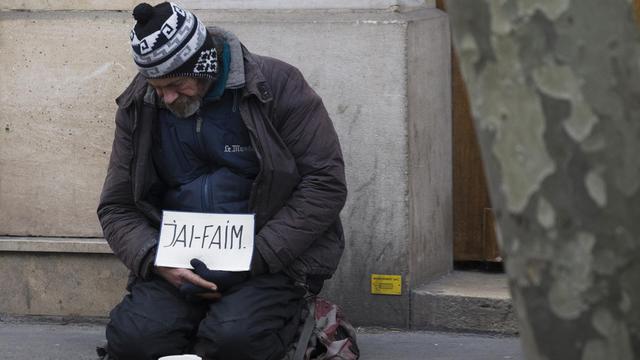France’s poverty rate increased in 2018, according to the national statistics institute INSEE
Inequalities in living standards have also increased the poverty gap between the wealthiest and poorest households.

In 2018, France had some 9.3 million people considered as poor, or 14.8% of the population, according to last figures published Wednesday, September 9th by the National Institute of Statistics and Economic Studies (INSEE). This represents an increase of 0.7 points compared to 2017.
These poor people, in the statistical sense of the term, lived on less than 1,063 euros per month for a single person, a threshold that corresponds to 60% of the median standard of living of the population. In 2018, the median standard of living was 21,250 euros per year, 0.3% higher than in 2017 in constant euros, or 1,771 euros per month.
>>> READ ALSO – How have the French been spending their money since the end of lockdown?
In an initial estimate published in October, INSEE had set the poverty rate at 14.7% of the population (+0.6 points).
This increase, which comes after four years of relative stability, is mainly explained by the decrease in housing allowances. But the institute does not take into account the equivalent drop in rents; if it were included, the increase in the poverty rate would be reduced by 0.4 points.
In 2018, inequalities in living standards have also increased between the wealthiest and poorest households. The richest benefited in particular from the increase in income from assets, linked to the sharp rise in dividends, while the least well-off were affected, besides the reduction in housing allowances, by the reform of certain family benefits.
Poverty highly depends on employment status
Logically, being poor depends very much on employment status: in 2018, 37.8 per cent of the unemployed were statistically poor, compared with 8.4 per cent of those in employment, similar proportions to 2017.
>>> READ ALSO – Covid-19 crisis: French people have saved a record 85 billion euros
Regarding pensioners, the proportion of people considered poor has increased from 7.6% to 8.7%. The non-revaluation of pensions and the increase in the generalised social contribution (CSG penalised the over-65s, especially those living alone) for some of them, points out INSEE.
The child poverty rate was also on the rise in 2018, from 20.1% to 21%, i.e. over one child in five living in precarious situations. This increase is mainly driven by the fall in the standard of living of single-parent families, which have been hard hit by the reform of housing allowances, a benefit received by one in two families.